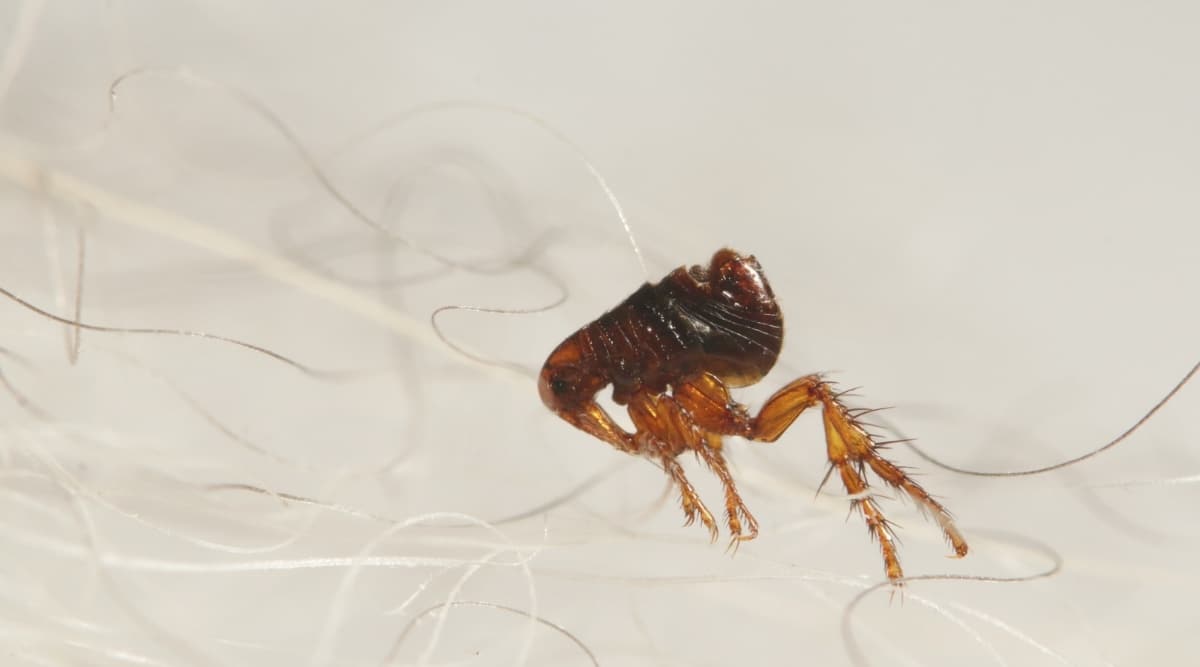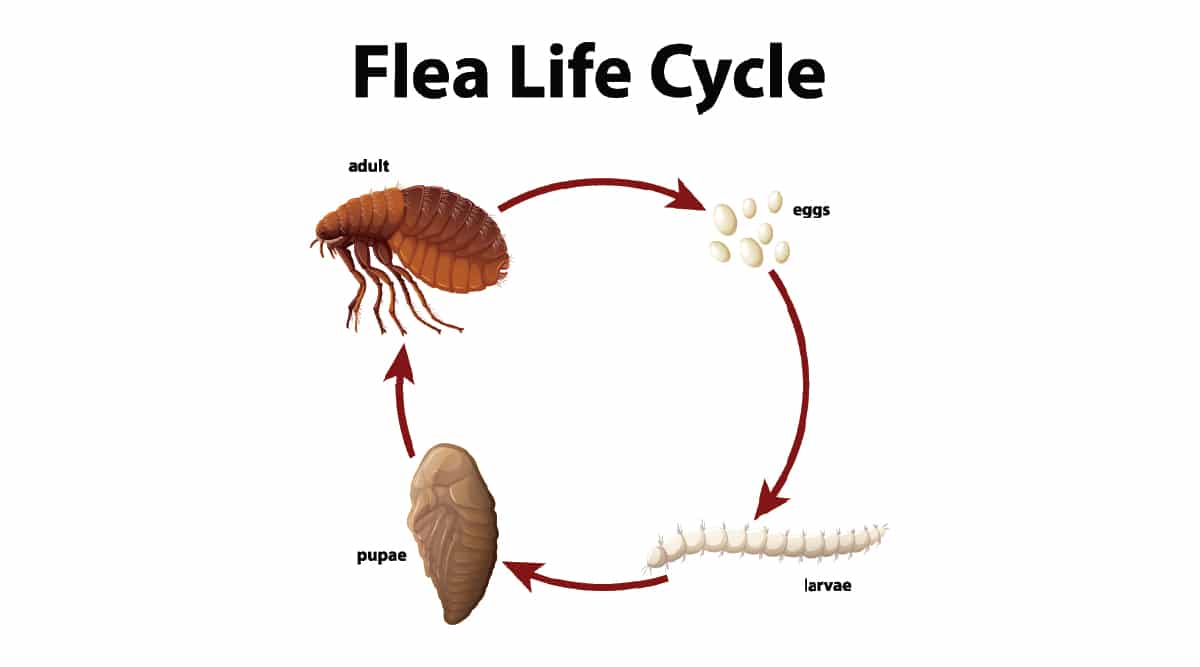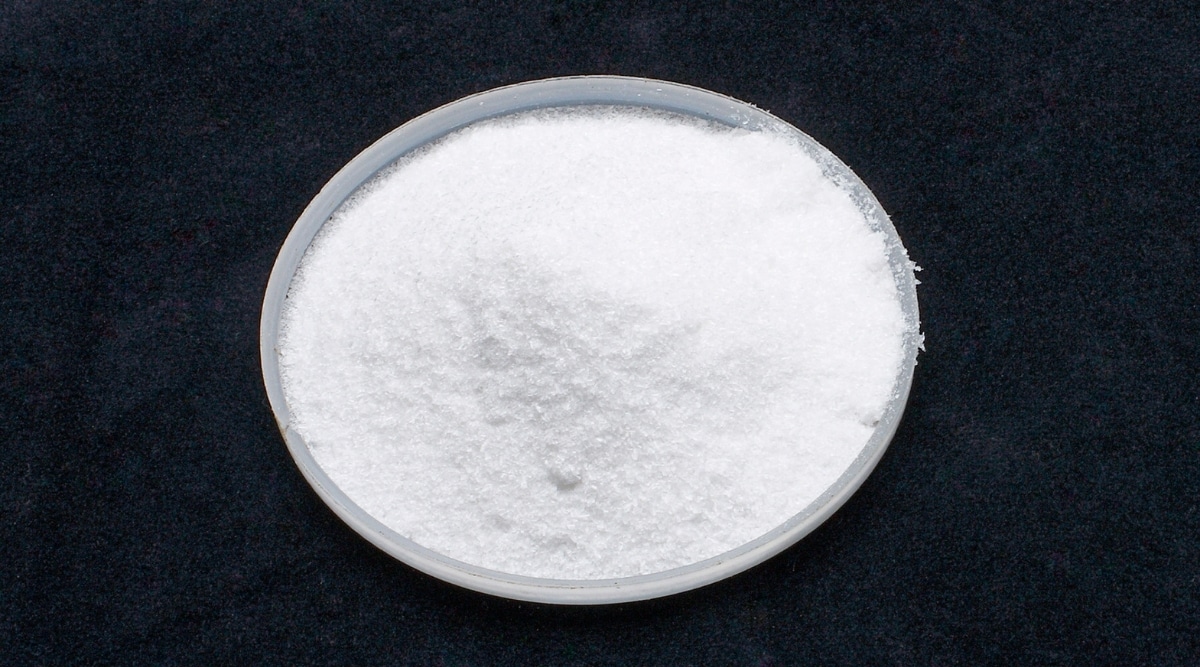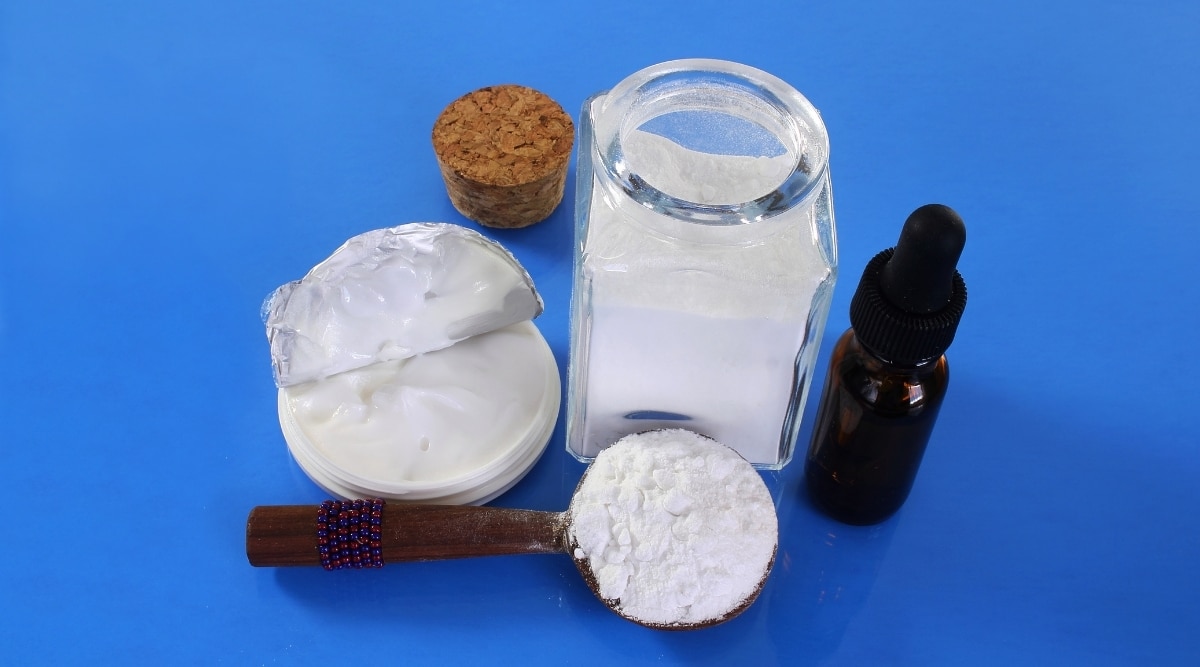Does Borax Powder Kill Fleas or Flea Eggs? Is Borax Safe?
If you're curious if Borax can be used as an effective home remedy to treat fleas, this comprehensive guide will take you through every step.

Fleas follow the golden rule of household intruders and pests: where there’s one; there’s more. This often leads to homeowners looking for different home remedies to fight the problem. There are many different home remedies that can be used to treat fleas, including dish soap, salt, coconut oil, and Diatomaceous Earth. Another common man made chemical that people often try to use to kill fleas is Borax. So Does Borax kill fleas, or their eggs?
In short, yes, Borax does kill fleas. In this article, we look at all things related to Borax as a treament for flea infestation. One problem many homeowners have is that they jump from solution to solution, when not getting results. That’s a surefire way to fail, when treating your home for a flea infestation. You need to pick a remedy and stick with it long enough to judge the results.
When treating your home for fleas using Borax, there’s some things you’ll want to know. This includes the amount of Borax to use, how to mix it, and more. Borax and Boric Acid aren’t the same thing, either. In the guide below, we cover all of this and more. Let’s jump in!
Why Do I Have Fleas in My Home?

Fleas are external parasites that feed on the blood of mammals and birds but are most commonly found on our favorite household pets.
There are over 2,000 different species and subspecies of fleas. In the United States, we most commonly encounter the cat flea (Ctenocephalides felis) and the dog flea (Ctenocephalides canis).
Their names specify each flea’s preferred host, but they aren’t picky eaters and will park themselves on any warm-blooded host they land on.
Even the most diligent pet owners are vulnerable to a flea infestation. In some regions of the United States, fleas are active year-round and pose a constant threat. They’re nearly microscopic, with adult fleas measuring only 1/8th of an inch long.
Fleas can jump over one foot high into the air and about the same distance forward, which is how they land on your pet while outside and eventually find their way into your home.
The presence of fleas can also be confirmed by identifying flea dirt, which is fecal matter they leave behind. Wipe the dirt with a wet paper towel; if it turns red, it’s flea dirt, as they leave behind digested blood.
While uncommon, flea infestations can occur even if you don’t have any pets. Outdoors, fleas hang out in warm, humid areas with tall grass, not in direct sunlight. They can attach to your shoes and pants and be tracked into your house that way.
How Long Do Fleas Live?

Unfortunately, it’s impossible to “wait out” a flea infestation and it must be dealt with as soon as possible. Fleas have four life cycles:
Egg: Flea eggs will hatch within 1 to 10 days of being laid. They’re small, off-white, and about the same size as a grain of salt, making them difficult to spot with the naked eye.
Larva: The larva phase lasts for 5 to 11 days. They appear as small, off-white worms about 2-5 millimeters long.
Pupa: After the larva phase, they remain inside a cocoon for as little as a few days or as long as six months.
Adult: The adult flea survives for approximately three months, sometimes more or less. They can last for an upward of 100 days without eating.
Vet West Animal Hospitals explains that an adult female flea can lay upwards of 2,000 eggs in her lifetime. Eggs are laid on the host, either your pets or yourself, and fall off during movement. The eggs will fall into your carpet, furniture, or pet bedding. Most of them will be found within fifty feet of the host’s favorite spot, like a pet bed or computer chair.
Are Fleas Dangerous?

Fleas don’t pose an immediate health risk to humans, but a prolonged presence in your home could mean bad news for your pets.
When fleas feed, they do so by depositing a small amount of saliva underneath the skin to thin the blood and make it easier to drink.
Both pets and humans have a negative reaction to flea saliva, which results in itchy and uncomfortable bug bites. Both humans and pets can develop infections from continually scratching and picking these bites.
Dogs respond to the irritation and presence of parasites by eating them. Fleas have a chance to carry tapeworm, and once they are inside your dog, they can introduce the tapeworm this way. Even though tapeworm is easily treatable, it doesn’t mean it isn’t a painful experience for your pet.
Depending on the size of your pet, they can also develop anemia from the blood loss. After realizing you have fleas, your primary concern should be keeping your pet flea-free and protected.
Does Borax Kill Fleas or Flea Eggs?

Yes, Borax does kill fleas and flea eggs. It can be used to treat flea infested carpets. Borax is a desiccant, meaning it works to induce and sustain a state of dryness in the surrounding area where it’s applied. Borax kills adult fleas, flea eggs, and flea larvae by absorbing moisture from the body, leading to death.
Boric acid is slightly more effective at indoor pest control as it affects a broader range of pests. It also acts as a desiccant. In powder form, boric acid is poisonous to pests and works by disrupting their central nervous systems and weakening their outer exoskeleton.
Since borax and boric acid are effective when battling a flea infestation, it’s up to you to decide which method you go with. Boric acid is slightly more expensive due to the extra refining process, but you may already have borax in the house as an existing cleaning product, making it your first choice.
Borax Flea Treatment Steps
To kill fleas and flea eggs using borax, make sure you follow these steps:
- Vacuum carpets thoroughly.
- Sprinkle a generous amount of borax powder in infested areas.
- Make sure you are following the safety precautions listed by Web MD above.
- Use a broad brush or broom to brush the borax deep into the carpet.
- Leave the borax treatment for a minimum of 6 hours or up to two days.
- The longer you leave the treatment, the better.
- During this time, make sure the area is not accessible to any pets or children.
- Vacuum carpets thoroughly.
- Use the vacuum hose to go along hard-to-reach areas like cracks or molding.
- These are areas where flea larvae may have burrowed.
- Dispose of the vacuum bags in a trash can located outside after each use.
- Not properly disposing of the fleas can lead to reinfestation.
You should also be treating your pets during this time with baths, combings, and medicine. Borax is exceptionally harmful and potentially deadly to animals and should not be used on your pet under any circumstance.
Borax vs. Boric Acid

Sodium borate, commonly known as borax, is an alkaline mineral salt with the appearance of a light, white powder. Borax and boric acid are widely confused, as both compounds come from the same element, boron.
Borax is mined out of the ground in salt plains found in areas such as Utah and Nevada. Boric acid is produced with borax as the main component before mixing it with a strong acid, such as hydrochloric acid. After the solution has cooled and crystallized, the boric acid crystals are filtered out and ground into a fine powder.
Common household uses and benefits of using boron include:
- Fighting stains, mold, and mildew.
- Neutralizing odors.
- Softening hard water.
- Making slime at home.
Borax is an ingredient in many products such as insecticides, laundry detergent, boosters, hand soap, fertilizer, etc. Likewise, boric acid is commonly found in antiseptics, insecticides, and flame retardants. Both borax and boric acid can be found in cosmetics in tiny concentrations (less than or equal to 5%, per the FDA, explained here by Cosmetics Info).
Even though borax and boric acid are incredibly similar, the bottom line is that they also have considerable differences. Knowing which one to use in certain situations will help get the job done effectively, like killing fleas and flea eggs.
Is Borax Dangerous?

Many homemade recipes for cleaning use borax as an eco-friendly alternative to synthetic chemicals. However, even though borax is natural, that doesn’t mean it’s entirely safe. The FDA banned borax altogether as a food additive in the United States.
Companies such as 20 Mule Team Laundry compare the risk of borax to consuming too much table salt, but this can be extremely misleading. When borax is consumed and comes into contact with your stomach acid, it converts into boric acid.
Ingesting a large amount of borax in a short time can damage your stomach, bowels, liver, kidney, and brain. Boric acid is naturally found in some foods such as leafy vegetables, fruits, and nuts, but consuming a naturally occurring small amount in food and beverages will not harm you.
Many of the warnings associated with borax are concerned with external contact rather than ingestion. When using borax at home, Web MD recommends you follow these precautions:
- Wear protective gloves.
- Use borax in a well-ventilated area, or wear a mask.
- If you get borax on your clothes, change and wash contaminated clothing.
- After you’ve finished using borax, wash hands properly and thoroughly.
If you’re coming into contact with a product that has borax listed as an ingredient, chances are it’s already diluted to a safe amount. Occasional exposure to diluted borax does not pose a significant health risk.
Potential Health Impacts While Using Borax
When using borax to kill fleas, chances are you’ll be using a natural or pure form of borax, void of any additives or detergents, which increases the health risks. The high alkalinity of borax causes it to become an irritant when it comes into contact with your skin, eyes, or is inhaled. Symptoms include:
- Eye irritation
- Oral irritation
- Skin rash
- Nausea and vomiting
- Respiratory issues
Toddlers, young children, and pets all face a higher risk when coming into contact with borax than adults. When using borax to kill fleas and flea eggs in your home, make sure the treated area is secured and inaccessible. Kids enjoy crawling, exploring, and licking unwashed hands, giving you more than enough reasons to keep borax and associated products out of reach.
The dangers listed above can sound scary but are easily avoidable if you follow the proper precautions when using borax or boric acid to kill fleas and flea eggs. If it isn’t coming into direct, undiluted contact with your mouth, skin, or eyes, you don’t have anything to worry about, but it’s essential to make sure all of the borax is vacuumed and disposed of after use.
Wrapping Up
Borax can be an effective home remedy for getting rid of fleas permanently. It’s cost-effective and can have great results. But you shouldn’t use Borax if you aren’t comfortable handling harsh chemicals. Stick to other home remedy options, and call an exterminator if you feel like you are over your head at any point in time.
Share this post
Save time and money on pest control
Subscribe to expert DIY pest control tips, pest control product reviews and information.




